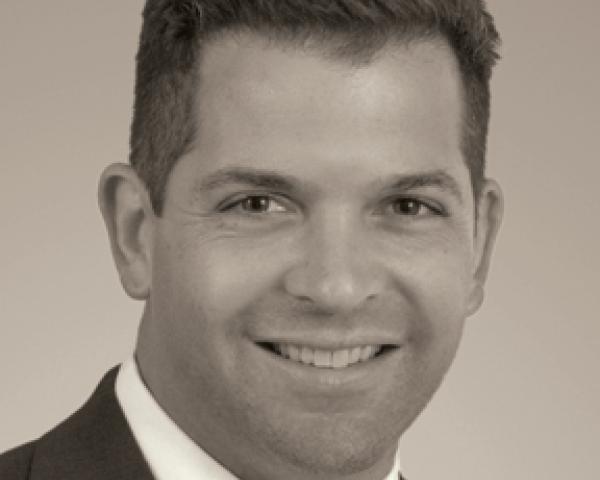Selling to Millennials Is Easy!
There is actually a simple method for selling to millennials. Let's call it “McMyler’s Equations of Millennial Mathematics.”

There is actually a simple method for selling to millennials. Let's call it “McMyler’s Equations of Millennial Mathematics.”

Get Involved
Our authors are what set Insurance Thought Leadership apart.
|
Partner with us
We’d love to talk to you about how we can improve your marketing ROI.
|

Nikole McMyler is an account executive for Aon Risk Services, working with middle-market and national commercial risk accounts. McMyler currently resides in Wisconsin, where she earned her degree in risk management and insurance from the University of Wisconsin – Madison.
In a little-noticed decision, a federal court allowed employers to impose 100% fines on employees who won't participate in wellness programs.

Get Involved
Our authors are what set Insurance Thought Leadership apart.
|
Partner with us
We’d love to talk to you about how we can improve your marketing ROI.
|

Al Lewis, widely credited with having invented disease management, is co-founder and CEO of Quizzify, the leading employee health literacy vendor. He was founding president of the Care Continuum Alliance and is president of the Disease Management Purchasing Consortium.
Disagreement in the course of a property insurance claim is an anticipated part of the process, but here are several ways to keep it civilized and productive.

Get Involved
Our authors are what set Insurance Thought Leadership apart.
|
Partner with us
We’d love to talk to you about how we can improve your marketing ROI.
|

Christopher B. Hess is a partner in the Pittsburgh office of RWH Myers, specializing in the preparation and settlement of large and complex property and business interruption insurance claims for companies in the chemical, mining, manufacturing, communications, financial services, health care, hospitality and retail industries.
Investors deployed $2.6 billion in capital to InsurTech start-ups in 2015. Here are the six trends to watch for in 2016.


 In each of the past three years, more than half of all U.S.-based deal activity in the insurance tech space has gone to health insurance start-ups. However, 2015 saw non-health insurance tech start-ups nearly reach parity in terms of U.S. deal activity (49% to 51%). As early-stage U.S. investments move beyond health coverage to other lines including commercial, P&C and life (recent deals here include Lemonade, PolicyGenius, Ladder and Embroker), 2016 could see an about-face in U.S. deal share, with health deals in the minority.
In each of the past three years, more than half of all U.S.-based deal activity in the insurance tech space has gone to health insurance start-ups. However, 2015 saw non-health insurance tech start-ups nearly reach parity in terms of U.S. deal activity (49% to 51%). As early-stage U.S. investments move beyond health coverage to other lines including commercial, P&C and life (recent deals here include Lemonade, PolicyGenius, Ladder and Embroker), 2016 could see an about-face in U.S. deal share, with health deals in the minority.


“We’re looking at the entire landscape of financial services, like life insurance, for example.”A day later, an article on European neobank Number26, which is backed by Peter Thiel’s Valar Ventures, mentioned the company would like to act as a fintech hub integrating other financial products, including insurance, into its app. We should expect to see more existing fintech start-ups in non-insurance verticals not only talk publicly but also execute strategic moves into insurance.
Get Involved
Our authors are what set Insurance Thought Leadership apart.
|
Partner with us
We’d love to talk to you about how we can improve your marketing ROI.
|

Matthew Wong is a senior research and data analyst at NY-based structured data firm CB Insight, where he covers startup and venture capital trends across geographies, emerging industries and investors. His published industry research and analysis have been featured in The New York Times, The Wall Street Journal, The Financial Times, Bloomberg, CNBC and Reuters among other major media outlets.
Common wisdom suggests that major workers’ compensation legislative activity won’t take place during an election year.

Get Involved
Our authors are what set Insurance Thought Leadership apart.
|
Partner with us
We’d love to talk to you about how we can improve your marketing ROI.
|
Risks are becoming more imminent: tensions between countries, refugees, terrorists, droughts, floods, cyber fragilities, unemployment....

 Over the past decade, the Global Risks Report has expanded its scope from analyzing the connected and rapidly evolving nature of global risks to also putting forward solutions and calling for public-private collaboration in strengthening resilience. Now in its 11th edition, the report describes a world in which risks are becoming more imminent and have wide-ranging impact: Tensions between countries affect businesses; unresolved, protracted crises have resulted in the largest number of refugees globally since World War II; terrorist attacks take an increasing toll on human lives and stifle economies; droughts occur in California, and floods happen in South Asia; and rapid advances in technologies are coupled with ever-growing cyber fragilities and persistent unemployment and underemployment.
Implications of sweeping digitization (also termed the “Fourth Industrial Revolution”) – ranging from transformations that are the result of rising cyber connectivity to the potential effects of innovations on socioeconomic equality and global security – remain far from fully understood. At the same time, climate change is unequivocally happening, and there is no turning back time.
The increasing volatility, complexity and ambiguity of the world not only heightens uncertainty around the “which,” “when,” “where” and “who” of addressing global risks but also clouds the solutions space. We need clear thinking about new levers that will enable a wide range of stakeholders to jointly address global risks, which cannot be dealt with in a centralized way.
Taken together, the situation calls for a resilience imperative – an urgent necessity to find new avenues and more opportunities to mitigate, adapt to and build resilience against global risks and threats through collaboration among different stakeholders.
By putting the resilience imperative at its core, this year’s Global Risks Report combines four parts to present an analysis of different aspects of global risks – across both global risks and stakeholders – focused as much on the search for solutions as on the analysis of the risks themselves.
Over the past decade, the Global Risks Report has expanded its scope from analyzing the connected and rapidly evolving nature of global risks to also putting forward solutions and calling for public-private collaboration in strengthening resilience. Now in its 11th edition, the report describes a world in which risks are becoming more imminent and have wide-ranging impact: Tensions between countries affect businesses; unresolved, protracted crises have resulted in the largest number of refugees globally since World War II; terrorist attacks take an increasing toll on human lives and stifle economies; droughts occur in California, and floods happen in South Asia; and rapid advances in technologies are coupled with ever-growing cyber fragilities and persistent unemployment and underemployment.
Implications of sweeping digitization (also termed the “Fourth Industrial Revolution”) – ranging from transformations that are the result of rising cyber connectivity to the potential effects of innovations on socioeconomic equality and global security – remain far from fully understood. At the same time, climate change is unequivocally happening, and there is no turning back time.
The increasing volatility, complexity and ambiguity of the world not only heightens uncertainty around the “which,” “when,” “where” and “who” of addressing global risks but also clouds the solutions space. We need clear thinking about new levers that will enable a wide range of stakeholders to jointly address global risks, which cannot be dealt with in a centralized way.
Taken together, the situation calls for a resilience imperative – an urgent necessity to find new avenues and more opportunities to mitigate, adapt to and build resilience against global risks and threats through collaboration among different stakeholders.
By putting the resilience imperative at its core, this year’s Global Risks Report combines four parts to present an analysis of different aspects of global risks – across both global risks and stakeholders – focused as much on the search for solutions as on the analysis of the risks themselves.


 To download the report, click here.
To download the report, click here.
Get Involved
Our authors are what set Insurance Thought Leadership apart.
|
Partner with us
We’d love to talk to you about how we can improve your marketing ROI.
|

Brian Elowe is a client relationship leader within Marsh’s global risk management sector. In this role, he works with several of the firm’s key global clients and leads many senior client management professionals in Marsh’s global client segment.
In 2015, a third of funding for strategic initiatives came from capital investments. In 2016, funding from new sources will increase to more than 40%.

Take a look at the financials of the insurance industry and industry projections, and it may seem like business as usual. But peek just under the surface at many insurers, and you’ll find a great deal of activity aimed at transformation. Typically, this activity takes the form of strategic initiatives—enterprise-wide programs that require sustained commitment and investment.
Our research reveals that the top strategic initiatives remain virtually the same as 2015: customer experience, analytics, new products and core replacement. This is an indication that the commitment to transformation aligned with these four initiatives is rock solid. However, the manner in which these initiatives are being funded is changing, with more funding coming from new sources outside the IT budget. In 2015, about a third of the funding for strategic initiatives came exclusively from capital investments. In 2016, funding from new sources will increase to more than 40%.
These are the questions to explore: Why change? Why all the investment and resources devoted to rethinking and reshaping the company? The answers are straightforward. Many recognize that we are entering a new digital era, one with technology rapidly advancing and increasingly in the hands of customers and competitors. Emerging trends such as the sharing economy and the rapid adoption of technologies such as cloud and mobile are creating opportunities (and risks) for insurers. In fact, SMA predicts that the introduction of new products, business models and business optimization will accelerate as insurers leverage maturing technologies and capitalize on emerging technologies such as wearables, the Internet of Things and drones. Technology really is driving a lot of the conversation and action at the senior levels these days.
Ultimately, many insurers have a vision of building a company that is agile and able to respond rapidly to market opportunities and threats. The common threads running through the strategic initiatives are the need to be digital and the key role of innovation. Although not the end games in and of themselves, digital and innovation are the enablers that form the foundation for future success. SMA has created the Next-Gen Insurer Model to describe what the future insurance company and what any future success will look like. The 12 initiatives that many insurers are pursuing are the mechanisms that insurers are using to become Next-Gen Insurers. There may be choppy waters under the visible tip of the iceberg, but the activity is very focused and taking individual companies and the industry as a whole in a new direction. In the not-too-distant future— within five years. by our estimate—the visible part of that iceberg will change, as well, and a new industry will emerge.
SMA has just released a new research report identifying strategic initiatives, “Insurers’ 2016 Strategic Initiatives: Advancing Industry Transformation.” The report covers the priorities of these initiatives, sources of funding and their role in helping insurers attain the future as a Next-Gen insurer.
Get Involved
Our authors are what set Insurance Thought Leadership apart.
|
Partner with us
We’d love to talk to you about how we can improve your marketing ROI.
|

Deb Smallwood, the founder of Strategy Meets Action, is highly respected throughout the insurance industry for strategic thinking, thought-provoking research and advisory skills. Insurers and solution providers turn to Smallwood for insight and guidance on business and IT linkage, IT strategy, IT architecture and e-business.
Disruption in insurance is a question of when, not if. But it's also still a question of how -- how will the industry pass the litmus test?

Get Involved
Our authors are what set Insurance Thought Leadership apart.
|
Partner with us
We’d love to talk to you about how we can improve your marketing ROI.
|

Denise Garth is senior vice president, strategic marketing, responsible for leading marketing, industry relations and innovation in support of Majesco's client-centric strategy.
After a year of learning about selling life insurance onlilne, the CEO of PolicyGenius offers six takeaways that can benefit all brokers and agents.

Get Involved
Our authors are what set Insurance Thought Leadership apart.
|
Partner with us
We’d love to talk to you about how we can improve your marketing ROI.
|

Jennifer Fitzgerald is the CEO and co-founder of PolicyGenius, an independent digital insurance company for consumers. Previously, she was a junior partner at McKinsey & Company, where she advised Fortune 100 financial services companies on marketing and strategy.
Walmart's Centers of Excellence Program is the best model we have for health coverage. It has been great for Walmart -- and for employees.

Get Involved
Our authors are what set Insurance Thought Leadership apart.
|
Partner with us
We’d love to talk to you about how we can improve your marketing ROI.
|

Tom Emerick is president of Emerick Consulting and cofounder of EdisonHealth and Thera Advisors. Emerick’s years with Wal-Mart Stores, Burger King, British Petroleum and American Fidelity Assurance have provided him with an excellent blend of experience and contacts.